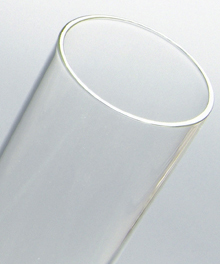 The glass is half full with these time saving tips on glass tubing end finishes
The glass is half full with these time saving tips on glass tubing end finishes
August 15, 2014 REDWIRE is news you can use from leading suppliers. Powered by FRASERS.
Posted by Pegasus Glass
As industry leaders in specialty glass for over 50 years, Pegasus is committed to providing the absolute highest quality... Read more
Subscribe
Free REDWIRE e-newsletter

Industrial glass manufacturing is an art and science.
Industrial glass manufacturers use advanced glass tubing and capillary technologies to create thousands of custom glass products for the most commonplace use to the most meticulous procedure.
Particularly, the life sciences fields, including biotechnology, fine chemicals and pharmaceuticals, depend on laboratory glassware with exacting standards of infallibility.
Glassware apparatuses such as glass tubing, for example, must be able to measure, test and transport volatile acids, liquids and solvents that have consistent quality in corrosive resistance and elevated temperature tolerances.
Glass tubing is made from borosilicate material and offered in a wide range of designs with diameter sizes from as little as 4 mm to 325 mm, to thicknesses varying from 0.8 mm to 9.0 mm.
But, glass tubing is more than selecting glass tubing is either traditional, flat or triangular in design. One characteristic that is often overlooked is the finish of the edge of the glass tubing, otherwise known as the glass tubing end.
Make a lasting impression with a clear cut finish. Take stock of the various glass tubing end finishes based on your specific application.
Want a frosted effect? Go for the cut, ground and chamfered finish.
Cut, ground and chamfered glass tubes are sawed down to give a clean edge that is ideal for sealing surfaces or a frosted finish. Glass tubes with diameters ranging from 1 mm to 100 mm works with this type of tubing end finish.
Need anti-fragment guarantee? Choose saw cut and chamfered finish.
The chamfered process used on the outside edge of the tubing reduces its likelihood of chipping or breaking.
Tight tolerance a priority? Opt for the saw or thermal cut with a fire polished finish.
Fire polishing eliminates sharp edges thereby dropping the chances of chipping.
The face of the tubing is polished with fire to ensure strength and damage resistance for applications that have a tight tolerance, as well as sealing requirements for the glass tubing.
Pinching pennies? Thermal cut finish is best on savings.
One of the most common glass tubing end finishes is the thermal cut.
Typically thermal cut finishes are used on a blank (or empty) glass tubing during glasswork applications, including fire polishing, forming or grinding. Glass dimensions from 7 mm to 600 mm are generally used for this technique.
Like keeping things in suspense? End it with a drilled finish.
Glass tubing with drilled holes is an optimal selection to suspend glass tubes or rods that gives the appearance of a glass tubing floating inside another glass tube.
Installation of sensor or other measurement devices can also benefit from this finishing option.
Visit Pegasus Glass to browse through their extensive online catalogue of standard and specialty glass tubes, rods and glassware.
Share
Posted by Pegasus Glass
As industry leaders in specialty glass for over 50 years, Pegasus is committed to providing the absolute highest quality... Read more
